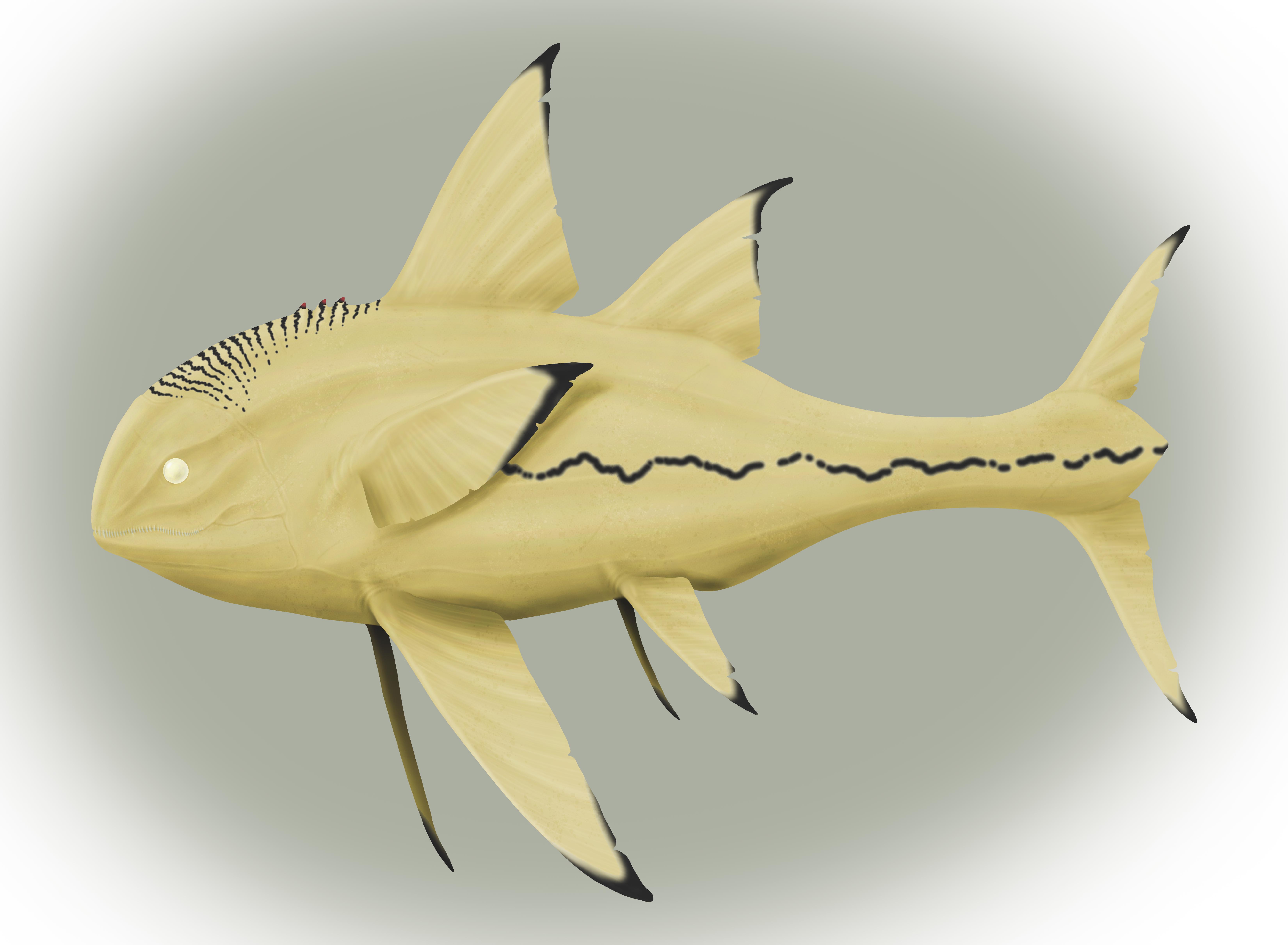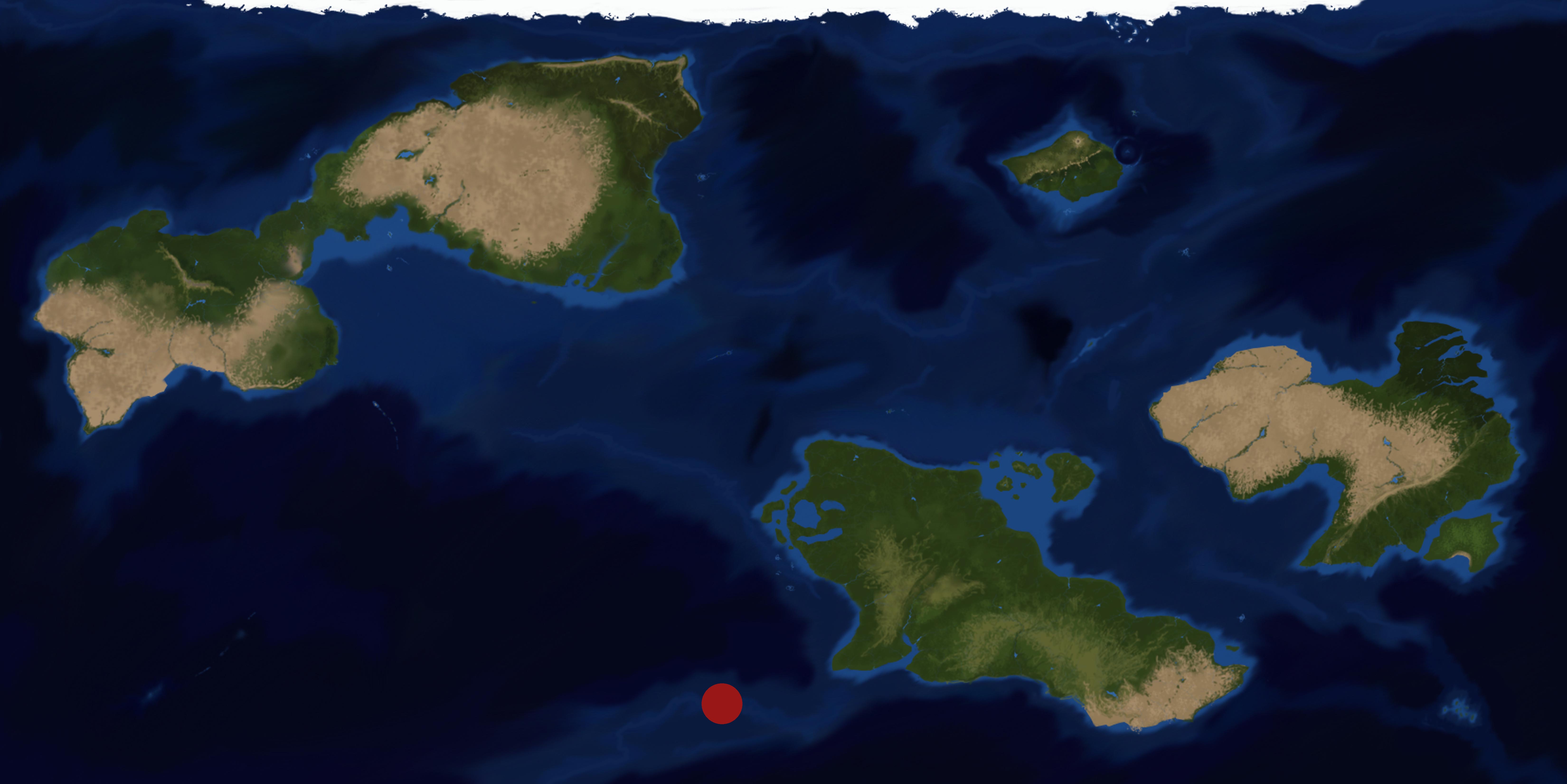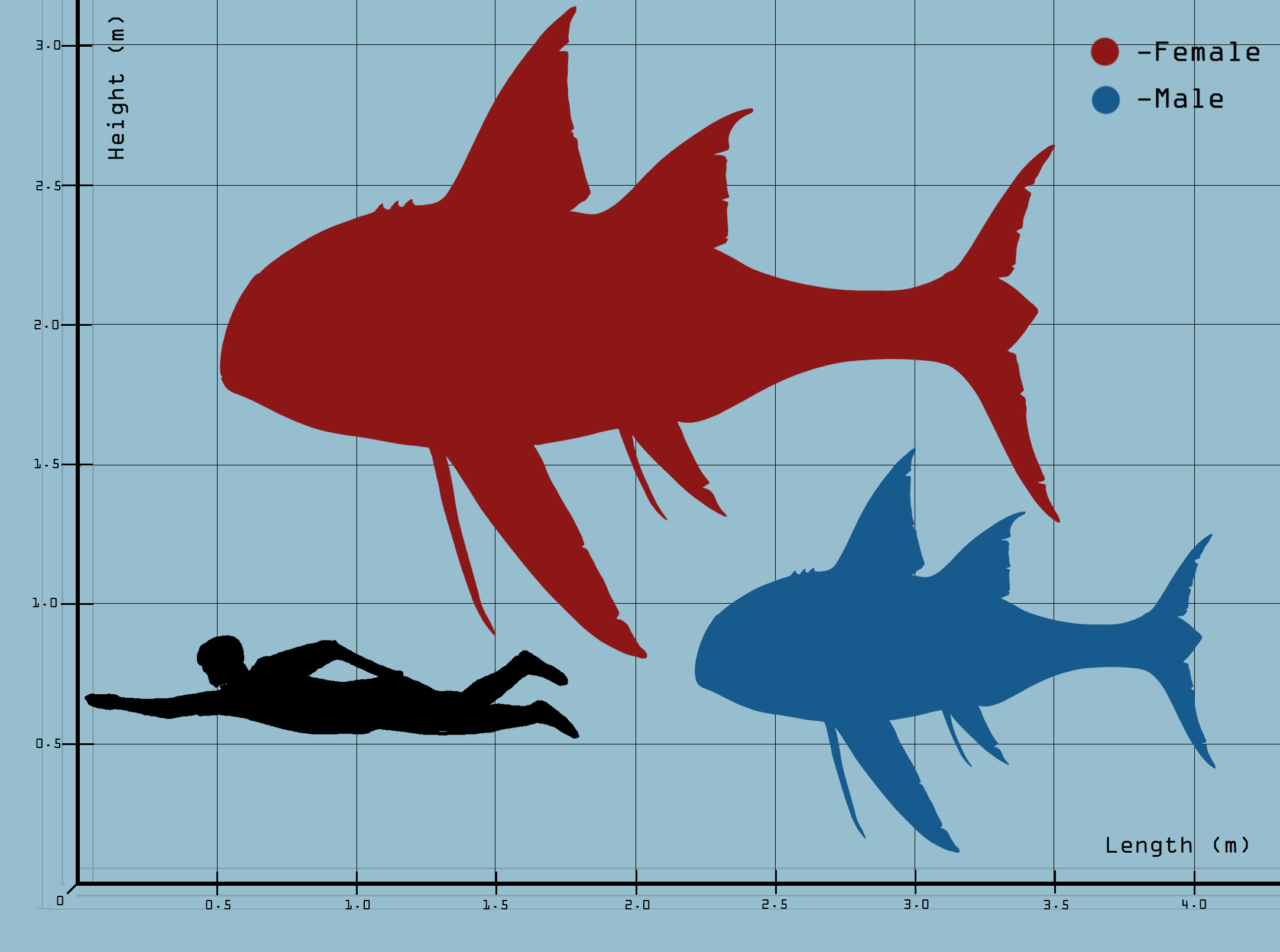Greater Limpadur
Primoplastovenator horribilis is a basal Armadilloarmatid amphibian from the Leviathan Islands.
The Greater, or Golden, Limpadur lives in the sandy plains under the fore reef, swimming close to the seafloor or at medium depth, scanning the water with its powerful echolocation organ and with acute hearing, attacking anything large enough to attract its attention as possible prey.
The strong jaw along with the few blunt teeth evolved to easily crush armour, ensuring the animal the kill even without the need to be precise while attacking, given the very limited eyesight.
P. horribilis's poor eyesight is a consequence of its direct ancestry; the amphibian's ancestors migrated to the photic zone from a deeper oceanic zone; as a vestigial trait, P. horribilis still synthetizes only a snall variety of photosynthetic molecules inside the eye, like its deep-sea ancestors, making it capable of only sensing green lights, otherwise, the eyes have lost their function completely, leaving the animal blind.
P. horribilis is known to attack humans; these attacks, however, are quite rare given how distant from the shoreline this animal lives, coupled with the depths it is found in.
Rarely caught in fishermen's nets, the amphibian is smoked and prepared in big slices by local communities; what can't be eaten immediately is often prepared into jerky for the winter times, when food is scarcer.
Basic Information
Anatomy
- Head rounded, jaw muscular and high at the base.
- Few sturdy and blunt teeth in the mouth.
- Eye vestigial.
- Cranial armour Pseudoabsorbed; dorsal armor reduced to three small aculeus-like plates near the base of the Dorsal I.
- Dorsal I & II fins veiled.
- Anal I & II fins moved frontally; Anal I grows at the level of the Pectoral and Dorsal I fins; Anal II grows at the level of Dorsal II.
- Gill Tail significantly lower than the body, ends in a high Gill Fan with pronounced ridges and moderately steep caudal drop.
- Caudal fins underdeveloped and almost vestigial.
Genetics and Reproduction
Seasonal monogamous species.
P. horribilis mates in the Summer, when food is most abundant.
Males enter heat four to five days before females, in this time they'll start producing low-frequency clickings with the throat, inaudible to humans; females attracted by the sound will start answering the call with their own, the two will "talk" and measure their voice; no two animals have the same call.
The farther the conversation goes, the more complex and loud it gets; during any of these steps the mating could fail if one of the two talks out of key or rhythm.
If the two animals are convinced by the partner, then mating can happen; even during the copulation process, the two animals don't stop talking to each other.
After the female has been fertilized, the couple disbands and the two members start to produce a different clicking sound to signal they've already mated to other members of the species.
The female incubates the eggs in the duct for two days; the eggs are laid in the sandy seafloor adjacent to the base of the fore reef wall.
The eggs hatch in the late-Summer, the hatchlings will have little time to learn to hunt before the Autumn; adults of the species will sometime cannibalize young specimens.
Growth Rate & Stages
Ontogenesis in the species not very marked.
Young specimens have only one to two weeks to learn how to survive on their own and grow before the autumn and winter, where most of the young die of starvation due to the low resources available.
Loss of natal aculeus after four weeks from birth.
Ecology and Habitats
Epipelagic species found at depths between 20 and 60 m, in the neritic zone.
Lives on the sandy seafloor on the bottom of the fore reef in the flat zone; the colouration helps it mimetize against the sand, while the striping breaks its silhouette.
Dietary Needs and Habits
Predatorial animal hunting anything big enough to attract its attention.
Biological Cycle
Seasonal species active mostly during the Spring and Summer times.
Active during the hottest hours of the Autumn and Winter but otherwise reduces its activity to preserve energy.
Additional Information
Social Structure
Lonesome animal, doesn't like conspecifics in the same area.
To avoid being attacked by members of the same species, the animal produces low-frequency ticks to signal its presence and distinguish itself from possible prey items.
Domestication
Although many attempts were made, the animal results incompatible to captive life, with all specimens kept in aquariums refusing to eat to the point of starvation.
It is thought this behaviour was due to the confusing nature of the tanks in which they were kept as the signalling they use to find themselves in the environment would bounce off of walls and return to the animal in a wave of overwhelming information, stunning the animal and making it panic.
Uses, Products & Exploitation
Rarely caught in nets, the animal is smoked or made into jerky for the winter season.
Due to the highly aggressive nature of this amphibians, diving in waters where it's found is considered a high risk activity.
Geographic Origin and Distribution
Perception and Sensory Capabilities
Very keen sense of smell and echolocation; almost completely blind.
Symbiotic and Parasitic organisms
Afflicted by Intestinal Tube Worms and drinker worms.
In a commensalisatic relationship with smaller amphibians that clean its skin from parasites.
Scientific Name
Eoichthyia; Armadilloarmatia ; Primoplastovenator; P. horribilis
Lifespan
10 Years
Conservation Status
Least Concern: No measures taken to protect the species.
Population Trend: STABLE
Average Weight
30 to 100 kg
Body Tint, Colouring and Marking
sand coloured body with light countershading on the abdomen and fins.
Dark grey to black striping on the dorsum starting from the back of the head and finishing at the base of the first dorsal fin.
Dark grey to black band going down the medial line starting from the Pectoral fin.
Fins dark grey to black pointed.
Dorsal armor black with red points.
Eye of the same colour as the body
Remove these ads. Join the Worldbuilders Guild












Comments